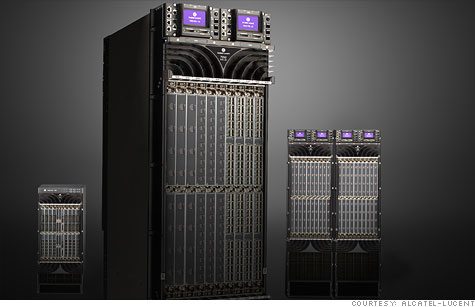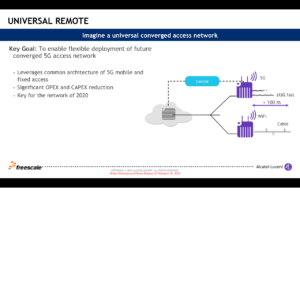Alcatel-Lucent and Freescale are targeting the convergence of wireline and wireless technologies with their latest cooperative venture. The companies are working to create a universal access device that can be used for any combination of wireline and wireless connections.
“This really has the potential to significantly change the way networks are deployed,” said Wim Rowet, senior systems architect at Freescale. He added that Freescale’s hardware expertise, systems capabilities and low-level software experience complement Bell Labs’ research in wireless and wireline.
“We think we have a strong combination to create, really, a game-changing implementation … as we move into the age of 5G and the associated activities of high-speed wireline,” said Rowet.
The companies said they hope to have a proof of concept within two years. Peter Vetter, head of fixed networks research at Alcatel-Lucent’s Bell Labs, said that while Bell Labs sees the universal remote as a key part of 5G networks, he does not envision it as part of the evolving 5G standard. He said that the motivation for this research did not come from direct customer requests, but that carrier customers are very excited by the idea.
“Today, these remote nodes are separate hardware platforms, separate networks, dedicated cabinet nodes,” said Vetter. “As we move forward to 5G, and it’s really 5G in a converged world of fixed and wireless … we need to bring those nodes closer to the end-user, within 100 meters.”
Freescale and Alcatel-Lucent have a longstanding partnership; the Texas company has supplied chipsets for Alcatel-Lucent’s wireless base stations and lightRadio small cells. Last year, the companies first announced their goal of developing a universal access node, dubbing the project “Future Remote.”


